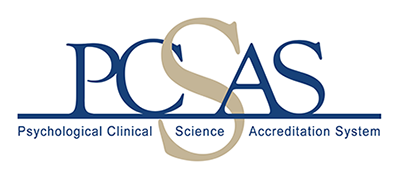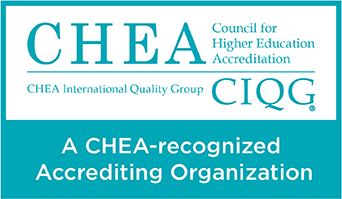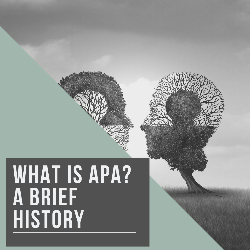by Julia S. Yarrington, M.A., University of California, Los Angeles
The American Psychological Association (APA) has become an increasingly contentious body in the field of psychology. Although the APA holds a number of responsibilities, the organization is perhaps most salient to students and faculty through its role in establishing professional standards for psychologists. In keeping with the APA’s goal to uphold these standards, the organization has implemented a system of accreditation for clinical psychology programs, expectations for curriculums in these programs, and another accreditation system for selecting appropriate clinical internship sites. Many in the field have criticized the APA’s role in accreditation, stating that the current system places undue burden on students and imposes a “one size fits all” approach to evaluating clinical psychology programs (e.g., Baker, McFall, & Shoham, 2008). Given the relevance of APA accreditation to the structure of clinical science programs and student experiences within these programs, I would like to provide a brief history of the APA in contextualizing how the organization became what it is today.
The APA was established by G. Stanley Hall in 1892 at Clark University when Hall and several other leaders in the field of psychology decided that there was a need for an association to discuss psychological matters. Although the field of psychology was relatively novel, Hall believed the formation of the APA could encourage the recognition of psychology as a science (Green & Cautin, 2017). Shortly after its founding, the APA grew to an organization with 31 invited members (Fernberger, 1932). The first APA meeting, which was held at the University of Pennsylvania, established several principles for the organization which are still upheld today, including the notion that meetings should be of a scientific character and that there should be a Council within the APA for administrative purposes.
Given its humble beginnings, one might ask, how did the APA become the large credentialing organization that it is today? First, membership increased dramatically within several decades (Fernberger, 1932). Second, as membership increased, and expanded to include associate members, or individuals who did not meet criteria for full membership (i.e., a degree in psychology and publications in professional psychology journals), concern about credentialing grew. In particular, consulting psychologists, who feared that their work was being devalued and underrecognized, expressed a desire for a credentialing system to establish their proficiency. Clinical psychologists, who were similarly concerned, formed their own credentialing organization, the American Association of Clinical Psychologists (AACP), in 1917 (Pickren & Rutherford, 2018; VandenBos, 1989). This division in many ways demonstrated tension that continues to exist between sections within the APA and the APA itself. Soon after the establishment of the AACP, the president of APA persuaded the AACP to disband with the promise that the APA would establish a Clinical Section and credentialing system. Although the APA followed through on this promise to create a credentialing system, the early system (pre-WWII) was not thorough, did not provide legal protections, and as such, left many disappointed (Greenwood, 2017).
After WWII, the APA reformulated and developed more stringent credentialing systems for psychologists, as well as further delineations of sub-field specific sections within the APA (Green & Cautin, 2017). Since that time, the organization’s history has been rife with divisions between scientific psychologists and practitioners, which has led to founding and disbanding of many separate associations, including the Association for Psychological Science (APS).
Today, the APA’s mission is to “promote the advancement, communication, and application of psychological science and knowledge to benefit society and improve lives.” The organization has in many ways been foundational in promoting the advancement of psychological science. However, it is possible that the association’s implementation of rigid expectations for practitioners and scientists in the field has actually been detrimental to its mission. Additionally, founders of the Psychological Clinical Science Accreditation System (PCSAS) have commented that the breadth of APA’s accreditation system, encompassing clinical, school, counseling, and combined psychology programs is part of the problem, as is the fact that APA no longer requires accredited programs to train students to be effective researchers (McFall, 2012). Therefore, although the APA’s mission is sound and its accreditation system may be helpful in ensuring adherence to some important guidelines for the field, the accreditation system has shifted in scope (McFall, 2012), leaving space for newer accreditation systems to offer more stringent guidelines for training clinical scientists who hope to have careers in research.
________________________________________________________________
References
American Psychological Association. (2020, February 1). Who we are. American Psychological
Association. https://www.apa.org/about/apa/
Baker, T. B., McFall, R. M., & Shoham, V. (2008). Current status and future prospects of
clinical psychology: Toward a scientifically principled approach to mental and behavioral health care. Psychological Science in the Public Interest, 9(2), 67-103.
Fernberger, S. W. (1932). The American Psychological Association: a historical summary, 1892-
1930. Psychological Bulletin, 29(1), 1-89.
Green, C. D., & Cautin, R. L. (2017). 125 years of the American Psychological
Association. American Psychologist, 72(8), 722.
Greenwood, John. (2017, August 10). The long and winding road: 125 years of the american psychological association. Behavioral Scientist. behavioralscientist.org/long-winding-road-125-years-american-psychological-association/.
McFall, R. M. (2012). Psychological Clinical Science Accreditation System: FAQs and facts. the
Behavior Therapist, 35(1), 11–15.
Pickren, W. E., & Rutherford, A. E. (2018). 125 years of the American Psychological
Association. American Psychological Association.
VandenBos, G. R. (1989). Loosely organized” organized psychology”: 1988 executive officer’s
report. American Psychologist, 44(7), 979.
Disclaimer: The views and opinions expressed in this newsletter are those of the authors alone and do not necessarily reflect the official policy or position of the Psychological Clinical Science Accreditation System (PCSAS).


